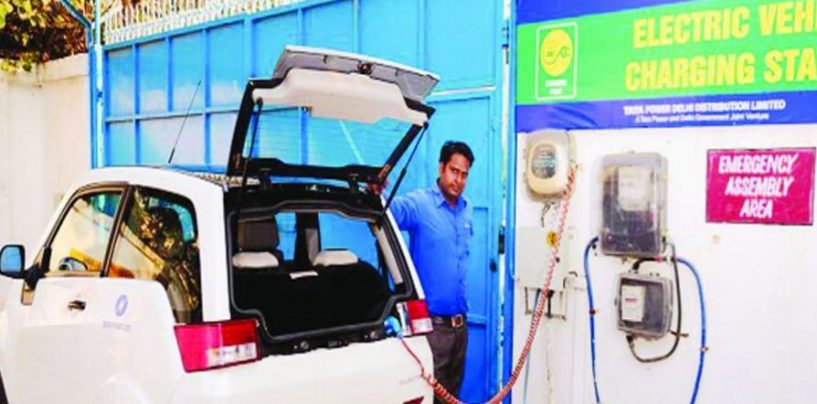
Electrifying Automotive Industry
by Opinion Express / 20 June 2019The auto industry is against the move to electrify transport. Is this its last gasp or does it have a point?
The automotive industry is being described by some, who feel the future is electric, as status-quoist. After all India’s two-wheeler manufacturers have openly attacked proposals by the NITI Aayog to make all sub-150cc motorcycles and scooters electric. So it is being ridiculed as ancient, not open to new ideas and scared of becoming extinct. But there are some severe issues with electrification in India that urgently need to be addressed and the industry, while dragging its feet on the issue, does have some points. The government and policy-makers would be silly to ignore them. While India has enough electricity, the electrical grid is nowhere near capable enough of handling the tremendous load that even disaggregated home-charging will place on the system. Of course, that will be built up over the next decades, but the other problem, that of cost, is not going to go away in a hurry.
Electric motorcycles and scooters are expensive, particularly if they have a functional range of over 100 km. The average commuter motorcycle costs around Rs 50,000 today, but an e-motorcycle with 100 km range will cost Rs 1 lakh at the bare minimum, possibly more. The batteries also will have a lifespan of around 1,500 cycles, which would be decent for a mobile phone, but you wouldn’t change your 100 cc motor after five years, would you? Nobody will buy electric vehicles for altruistic reasons, no matter how much greenmail the government and environmentalists indulge in, unless the motorist sees actual benefit of the product. In a two-wheeler, running on electricity is less than half as expensive as running on petrol. Even in extreme scenarios, that means a saving of Rs 500 a month. If fuel prices increase faster than electricity prices, buying an electric two-wheeler does not make sense and the government’s FAME-II subsidy scheme is but a drop in the ocean. The fact is the four-stroke 100cc petrol motorcycle brought mobility to millions of Indians, giving even the impoverished a mode of transport that empowered them economically. The economic impact of the motorcycle thanks to the mobility it produced was crucial to India in the late 1980s through the 1990s, much like a mobile phone in the mid-2000s and cheap over-the-air data today. Going electric is a noble goal but if we set targets in a very short-term, it will leave millions of Indians behind. It is elitist and if we are to work towards “sabka saath, sabka vikas”, we will need to work towards solutions that make environmental friendliness affordable.
Writer & Courtesy: The Pioneer
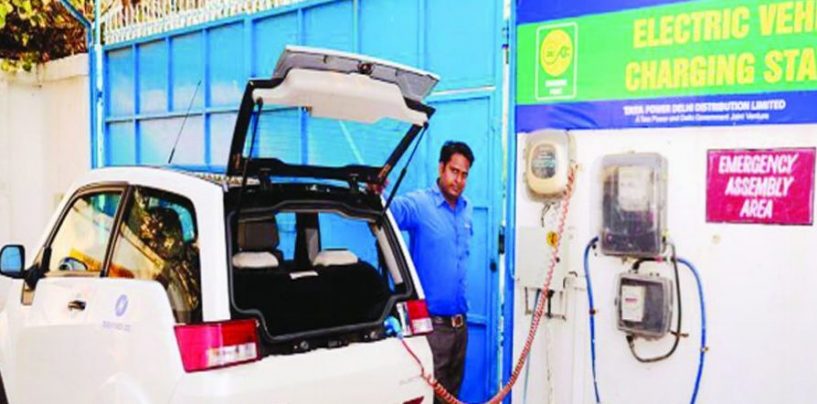
Is India Ready for Electric Transportation?
by Opinion Express / 19 June 2019The auto industry is against the move to electrify transport. Is this its last gasp or does it have a point?
The automotive industry is being described by some, who feel the future is electric, as status-quoist. After all India’s two-wheeler manufacturers have openly attacked proposals by the NITI Aayog to make all sub-150cc motorcycles and scooters electric. So it is being ridiculed as ancient, not open to new ideas and scared of becoming extinct. But there are some severe issues with electrification in India that urgently need to be addressed and the industry, while dragging its feet on the issue, does have some points. The government and policy-makers would be silly to ignore them. While India has enough electricity, the electrical grid is nowhere near capable enough of handling the tremendous load that even disaggregated home-charging will place on the system. Of course, that will be built up over the next decades, but the other problem, that of cost, is not going to go away in a hurry.
Electric motorcycles and scooters are expensive, particularly if they have a functional range of over 100 km. The average commuter motorcycle costs around Rs 50,000 today, but an e-motorcycle with 100 km range will cost Rs 1 lakh at the bare minimum, possibly more. The batteries also will have a lifespan of around 1,500 cycles, which would be decent for a mobile phone, but you wouldn’t change your 100 cc motor after five years, would you? Nobody will buy electric vehicles for altruistic reasons, no matter how much greenmail the government and environmentalists indulge in, unless the motorist sees actual benefit of the product. In a two-wheeler, running on electricity is less than half as expensive as running on petrol. Even in extreme scenarios, that means a saving of Rs 500 a month. If fuel prices increase faster than electricity prices, buying an electric two-wheeler does not make sense and the government’s FAME-II subsidy scheme is but a drop in the ocean. The fact is the four-stroke 100cc petrol motorcycle brought mobility to millions of Indians, giving even the impoverished a mode of transport that empowered them economically. The economic impact of the motorcycle thanks to the mobility it produced was crucial to India in the late 1980s through the 1990s, much like the mobile phone in the mid-2000s and cheap over-the-air data today. Going electric is a noble goal but if we set targets in a very short-term, it will leave millions of Indians behind. It is elitist and if we are to work towards “sabka saath, sabka vikas”, we will need to work towards solutions that make environmental friendliness affordable.
Writer & Courtesy: The Pioneer
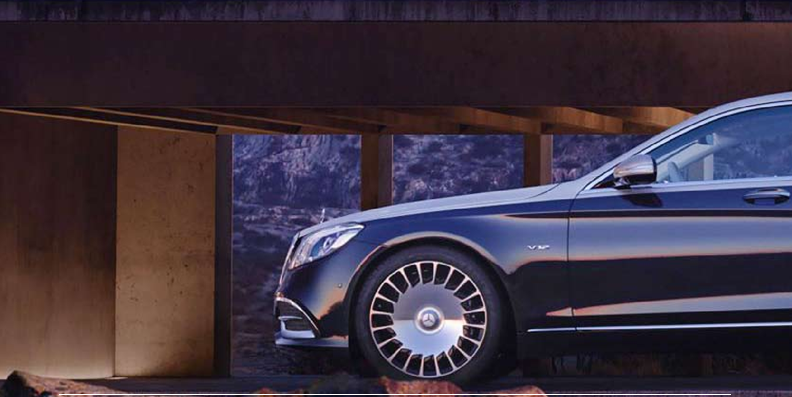
MERCEDES-MAYBACH: THE ULTIMATE CAR
by Romil Raj Bhagat / 14 June 2019Mercedes-Maybach stands for the ultimate in exclusivity and individuality. The luxury brand combines the perfection of the MercedesBenz S-Class with the exclusivity of Maybach. Now the top model from Mercedes-Benz is even more refined. A new radiator grille, optional two-tone paintwork and new exclusive colour combinations in the interior ensure an even more majestic look. The world premiere is at the Geneva Motor Show (6.–18.3.2018).
A reinterpretation of the MercedesMaybach radiator grille with its fine, vertical struts accentuates the front end. The grille was inspired by a pinstriped suit. It celebrated its world premiere in the Vision Mercedes Maybach 6, the exclusive coupé study which thrilled connoisseurs and fans of the brand in 2016.
The two-tone exterior paint finish is also a classic Mercedes-Maybach theme. In future there will be nine different colour combinations available on request. The double clear coat is available as a further new option for all dark colours. It creates a brilliant surface finish with a piano lacquer effect and a
special impression of depth. The second bodywork clear coat, including intermediate sanding, is intricately applied by hand in the Maybach Manufaktur by specially trained varnishers.
The exterior look of the top model is rounded off by a new luxury 20 inch multi-spoke wheel. There are also three exclusive 20 inch wheels to choose from for the Mercedes-Maybach, including the wheel with a 20 hole design familiar from the Mercedes-Maybach S Cabriolet. Two new exclusive colour combinations
are offered in the interior: armagnac brown/black and savanna beige/black.
The black Maybach Exclusive nappa leather upholstery appointments can also be ordered with a choice of copper-, gold- or platinum-coloured contrasting topstitching. Also new in the range are trim inserts in design flowing lines Magnolia.
With a length of 5,462 mm and a wheelbase of 3,365 mm, the flagship of the Mercedes-Benz model range exceeds the long-wheelbase S Class Saloon by 20 cm in both dimensions. Rear passengers benefit from this increased size, as well as from standard equipment that includes Executive seats on both left and right and other exclusive details such as innovative voice amplification. The huge success of the Mercedes-Maybach speaks volumes: since the market launch of the Maybach in February 2015 over 25,000 MercedesMaybach S Class models have already been delivered to customers. In 2017, too, more than 1 in 10 S Class models sold was a Mercedes-Maybach.
By Romil Raj Bhagat Burau Chief – Middle East is based in Dubai.
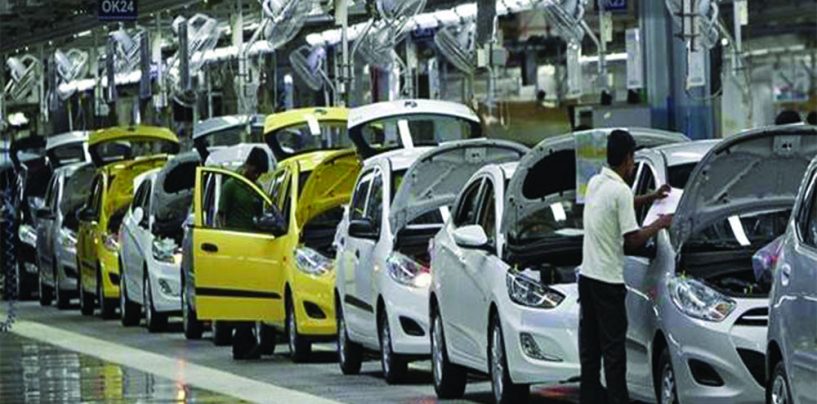
Huge Blow for Automotive Industry
by Kushan Mitra / 10 June 2019Sales of cars and utility vehicles have taken a huge hit and upcoming changes in safety standards and emissions will drive sales even lower
The past few months have been particularly brutal for the Indian automotive industry. Sales of cars, utility vehicles, motorcycles, scooters and heavy commercial vehicles have all fallen, and no manufacturer has been spared. After several years of consistent growth, the market’s sudden decline has caught every manufacturer off-guard, and with several other producers making entry into India soon, it has made plans go awry. Over the past few years, the capacity of close to a million new vehicles has been added in India and with Korean car-maker Kia about to inaugurate its new facility in Anantapur, Andhra Pradesh, later this year, even more capacity is coming on stream. But everyone in the industry is puzzled by the scale of the decline and is wondering when sales will start growing again.
One reason, a line being parrotted by all large manufacturers ever since the four-decade-old veteran of the industry Maruti-Suzuki Chairman RC Bhargava mentioned it, is that sales tend to decline in the months leading up to a General Election. This afflicts not just the auto industry, but consumer sentiment is also depressed before elections simply because of political uncertainty filling the air. Consumers tend to hold on to their money lest a new Government comes in and changes policy. But the contagion for the Indian automotive industry started earlier than expected this electoral cycle, beginning with the devastating floods in Kerala that all but wiped out sales during the Onam festive period. The northern festive season while seeing some sales increases were muted as was the wedding season. Since 2019 rolled around, sales have jumped off the cliff — last month Maruti-Suzuki saw sales drop by a fifth over the same month (May) last year.
So the impending elections, where Narendra Modi romped home in a canter, cannot be the sole reason. Of course, outlier events such as the Kerala floods had an impact, but the decline in sales is a clear indication of economic distress. Even with some rate cuts making loans cheaper, several banks, particularly those worst affected by Non-Performing Assets crisis, have been reluctant to participate in retail loans. This is evident in fewer promotions and even advertising for car loans. The Reserve Bank of India’s aggressive series of rate cuts will serve no purpose in fostering growth if banks do not start lending again. However, with political stability and a need to boost the economy, there is a feeling that loan disbursals will kick into a higher gear soon.
But the industry will not be out of the woods that easily, for several reasons. First, there is a mandatory requirement of five years of insurance for all vehicles. This is a direct result of low rates of repeat insurance purchases, particularly for two-wheeler owners. At the same time, the Government has insisted on manufacturers adding safety features to their products. For car manufacturers this has meant everything from anti-lock brakes, two-front airbags minimum, reversing sensors and speed alarms. Two-wheelers, too, get newer braking systems called a Combined Brake Distribution (CBD) system. Higher rates of insurance will mean that many of the accident victims — and India has over 1,50,000 road fatalities heavily skewed towards pedestrians and two-wheeler users — will get some semblance of coverage.
In cars, some of these features had already started to become standard, so cost escalation will be minimal but in two-wheelers many of these features are relatively new. Mandatory insurance coupled with an increase in third-party insurance rates mandated by the insurance regulator has seen prices increase almost 10 per cent, driving a pin through the ballooning growth and bursting it. Sales for scooters, growing at a frantic pace over the past decade, have dropped by a third.
A bump in prices dictated by policy could be a temporary thing, but a double-whammy like this hurts sales in an already troubled consumer economy. And it is only going to get worse. A few years back, after a very polluted winter in the National Capital, the Government decided to accelerate the process of introducing new emissions norms. It was decided that vehicles would shift to Bharat Stage-IV (BS-IV) almost immediately and mandatorily introduce Bharat Stage-VI (BS-VI) norms starting from April 1, 2020. Skipping BS-V norms meant that manufacturers had to skip an entire generation and force them towards expensive innovation.
It has also meant that costs will go up on BS-VI vehicles — all of which will need new types of fuel treatment, injection, exhaust and catalytic systems. All of which add costs. While the automobile and commercial vehicles have moved to the comparable Euro-VI emissions standards in Europe, for two-wheeler manufacturers, the move to BS-VI is an all-new emission standard anywhere in the world, and India, as a result, will manufacture the world’s cleanest motorcycles.
Nobody can argue about these features. Extended insurance will help accident victims and owners and lead to proper measurable statistics for insurance companies leading to differentiated rates and better coverage. Better safety features should help manage road fatalities, although amendments to the Motor Vehicles Act, if cleared by the Parliament, will make the biggest difference. As for better emissions, it is apparent to all who live in the plains that air quality has dramatically worsened. Any action to improve it should be welcomed. Yet, there is also no doubt that this triple threat has hurt consumer sentiment with increased prices that might keep demand suppressed for longer.
This is not a good thing for the Government — the automotive industry directly employs one and half million people and indirectly supports over 10 million families. While changing policies, promoting safety and better emissions are good things, the Government should try to keep a measured approach when it comes to changing norms going forward, particularly with the push for electrification. There is no doubt that electric mobility is the future, but a healthy and thriving automotive industry is important. Changes in policy should not be made in a knee-jerk reaction or because of the need to follow global fads. There are huge challenges to adopt electric mobility in India and we are seeing the result of what poor policy planning can do to an industry.
(The writer is Managing Editor, The Pioneer)
Writer: Kushan Mitra
Courtesy: The Pioneer
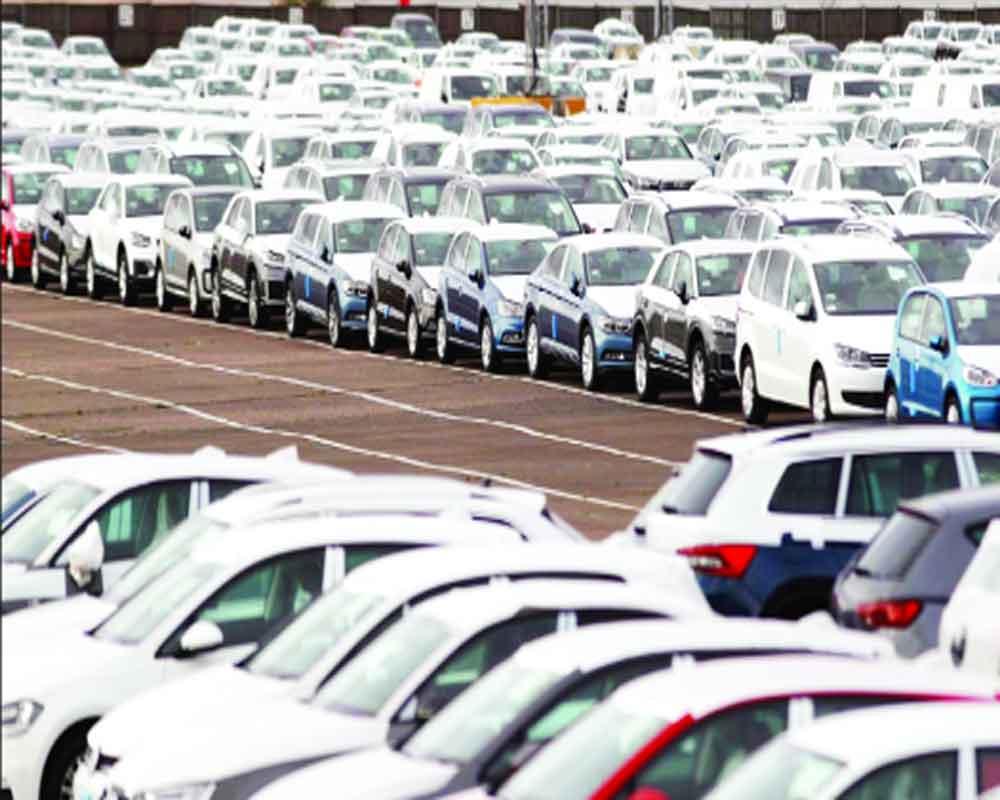
Automobile Sector Facing Shrink
by Opinion Express / 04 June 2019Car sales have fallen in recent months. Is this because of consumer demand contraction and a lack of appealing models?
The Indian automotive industry is on the skids — after five years of increasing sales growth, the last couple of quarters have been devastating in terms of sales. In May, sales for the single-biggest driver of the Indian car market Maruti-Suzuki dropped 26 per cent on a year-on-year basis. Most other car manufacturers fared equally badly. While many in the industry had mentioned that there was a historical slowdown in consumer demand across categories, the slowdown this time has not only been steeper than usual but it began earlier and even as the elections concluded, demand remains quite slow. There is some expectation that demand might recover now that a stable Government has been sworn in, but with economic growth figures being depressed, any signs of growth might just be a mirage.
But is it all just about the economy? There are those, who believe improvements in public transport in major metropolitan areas — with Metro construction and the rise of app-based taxi services such as Ola and Uber — have played a role in the decline. That might be the case with a very small, select group of potential car buyers. But it is unlikely to have had a major impact on two-wheeler sales, let alone commercial vehicles, both of which are also suffering, thus hinting that the sales slump is all to do with the economy rather than changing patterns of ownership. And if it were not for the demand boost from private taxi owners, demand might have been even more muted. But in India, last-mile connectivity is still a problem even in cities with tolerable public transport. Commuters in areas such as the National Capital Region (NCR) have such huge distances to traverse that owning personal transport is a necessity for many Indians. So, how can the Government as well as the auto industry boost car sales? One way will be for the auto industry to wean itself off the large net margins it has for years, passing through some of the efficiency benefits. The Government, while promoting public transport, must realise that the automotive industry is vital to the economy and job-creation. It should rationalise some of the excise duty norms for personal transportation. In addition, muted economic growth would mean that interest rates are almost certain to come down but banks have to start issuing more loans. With a stable Government at the helm and economic growth high on Narendra Modi’s agenda, the industry should be able to recover smartly.
Writer: Pioneer
Courtesy: The Pioneer
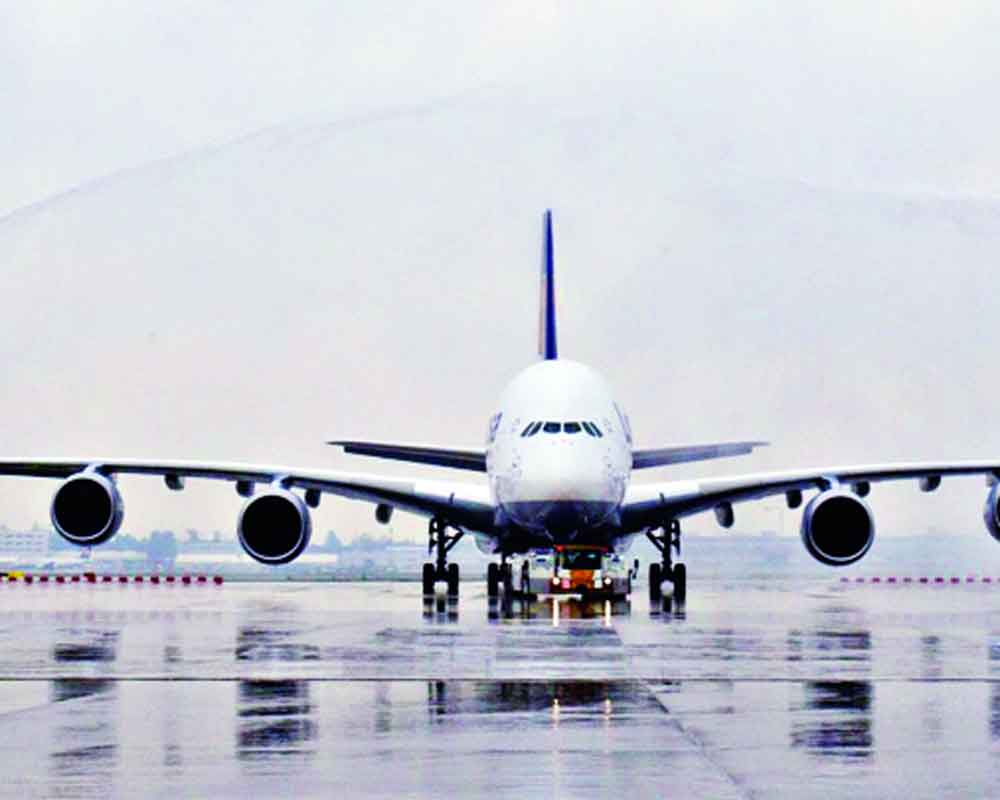
The production of Airbus A380 to halt in 2021 but the plane is far from being out
by Kushan Mitra / 25 February 2019The superjumbo that was touted to be the future of air travel might have been doomed with a dramatic change in the manner of flying, but it’s not an end for this hallmark of engineering
Make no mistakes: Airbus A380 is a hallmark of engineering – a plane unlike any other ever produced. A fully-loaded Airbus A380 weighs 575 tonnes and the plane rising off the ground seems to defy the laws of physics. As someone who professes to be an aviation geek, every time this writer sees an Airbus A380, he feels rather awestruck. Flying on one of these aircraft is an amazing feeling. True, this writer admits, that the older Boeing 747 certainly looks more graceful with cleaner lines and in some paint jobs, is absolutely stunning. While the A380 is undoubtedly a remarkable feat of engineering, it is not what one would describe as a “looker.” But as the European aircraft manufacturer, Airbus, announced that it is about to pull the plug on producing A380 by 2021, one felt a bit sad. In fact, it was an irony that Airbus announced the impending closure of the A380 line just as when Boeing 747 celebrated the 50th anniversary of its first flight. Indeed, the old queen might even outlast the behemoth on the production line as demand for Boeing 747 freighters has kept up slow with steady production.
But that does not answer the question as to why Airbus A380 failed in the pile of Airbus’ marketing hubris? Part of the answer is Airbus’ own manufacturing issues around the plane. Given the way Airbus is structured — it is a pan-European company with factories across France, Germany, Spain and the United Kingdom — different sub-assemblies of the aircraft were brought from different parts. This is standard practice for Airbus, which ferries fuselage sections between France and Germany and the wings are brought from Wales on a fleet of outsize and specialised airborne freighters. This works fine for the Airbus’ money-maker, the A320 family of narrow-body planes that power low-cost travel across the world, but A380 is a different scale. Even sub-assemblies are so huge that they have to be brought in on river barges and on oversize trucks through narrow passages. In order to keep various nations of the consortium happy, this was needed instead of the more logical solution of making everything at one place.
Of course, this is a logistical issue and even Airbus’ American rival, Boeing, went down this route when it came to Boeing 787 Dreamliner, which sees its parts flown from all over the world and across oceans on modified Boeing 747s. Logistical issues can be dealt with but engineering problems are a lot tougher and Airbus’ engineers made a huge mistake when they used two different versions of the same 3D modelling and simulation software to design the plane. While one may think that two different versions of the same software might not be a critical issue, think of it more on the lines of operating systems like Windows and MacOS. Things were completely incompatible and when translated into the real world, it meant that wiring harnesses and floor panels did not quite align perfectly.
For very good reasons, aviation is a safety oriented industry. Jugaad solutions elevated in India cannot work in a safety-oriented environment and fixes had to be made. Particularly, when you consider that Airbus A380 has over 530 km of wiring, this wasn’t easy at all. Although much of the wiring was not flight-related as Airbus managed to produce and fly prototypes by 2005, the wiring was essential for creature comforts of passengers for things like lighting, entertainment systems and for galleys where the food is prepared. While A380 was certified as a perfectly capable flying machine by the end of 2006, albeit with almost a year’s delay, deliveries were nowhere on the horizon.
Slippages happen on many major engineering projects — whether they are in civil, software or an aircraft. Even Boeing suffered multi-year delays on the 787 Dreamliner because it did not anticipate the scale of problems that it would face while moving from aluminum to carbon fibre. But delays also give buyers a second thought. When Airbus launched the A3XX, as it was called in 2000, it was surrounded by too much hype — it was this big, new, shiny aircraft that airlines just had to have. Think of it like when a car company launches a new product, the marketing machine hypes it up and even manufactures a case for one to buy that car. This was the case with airlines and A380. But if there is any delay, and there are minimal or no penalties for cancelling the order, airlines began, like normal consumers would, to sit back and think about the order.
Airbus’ logic was that A380 would be a perfect replacement for Boeing 747 and would continue with the airline’s policy of flying from one major city to another from where passengers could take connecting flights to their onward destinations. A few years, ago when one wanted to travel from New Delhi to Madrid, for example, he/she would have to fly to a major European hub, such as Frankfurt or London, transit through a massive airport while sleepy or dragging a child and then connect to a new plane. But that sort of travel vanished quickly, partially thanks to Boeing 787 Dreamliner; although the change had begun a few years before the Dreamliner entered production. Because twin-engined aircraft are so much more efficient and easier to maintain — their smaller size being perfect for what airlines call ‘thinner’ routes where demand is more limited — it can easily fit in a plane like Boeing 787 and this is what started happening. Today, for example, one can fly directly between New Delhi and Madrid on a Boeing 787.
Then there was another problem: Boeing 777 and Airbus’ new A350 aircraft, whose larger versions can carry almost 80 percent of the Airbus A380’s load in terms of passengers and cargo, could do so at half the cost. Airbus A380 is a big, large plane with four engines while others are smaller (only just) and have just two engines. This in itself makes it more efficient. So, for the same cost of operating one A380, airlines could operate two flights on a 777 or A350, carrying half as many additional passengers. Also, these new planes could fly very far. While a flight between Mumbai and New York would have meant a stop or two a decade ago, today, there are two non-stop flights between the two cities. The same reason is also applicable to Boeing 747, whose latest passenger version has also stalled on the sales front. But since Boeing 777 and 787 are doing so well and because the latest version of 747 was a cheaper (relatively speaking) re-engineering job than the estimated $25 billion that the A380 cost to develop, it survived.
For sure, the end of production of Airbus A380 will not mean that the plane will stop flying. In some slot-restricted airports, such as Heathrow Airport in London, where one can see multiple A380s from different airlines, it will continue. Also Dubai’s Emirates airline, which is the largest operator of the plane with 110 flying and most of the remaining 20-odd deliveries going to that country, will continue to be a huge operator of this plane as that airline builds up its massive hub policy. It is very likely that some later-built A380 aircraft will easily fly on till 2030, so there is no rush to get on a A380 just yet.
In fact, Emirates flies A380 into Mumbai and Lufthansa and Singapore Airlines fly the beast into New Delhi. All the three airlines are expected to fly these aircraft into India in the foreseeable future. That said, as someone who has flown on the big plane, on demonstration flights when Vijay Mallya had brought one to India for the longest-scheduled A380 service in the world between Dubai and Los Angeles, and experienced the wonderful bar at the end of the upper deck, flying on this plane is an experience that one must put on his/her bucket list.
Courtesy: The Pioneer
Writer: Kushan Mitra, Managing Editor, The Pioneer
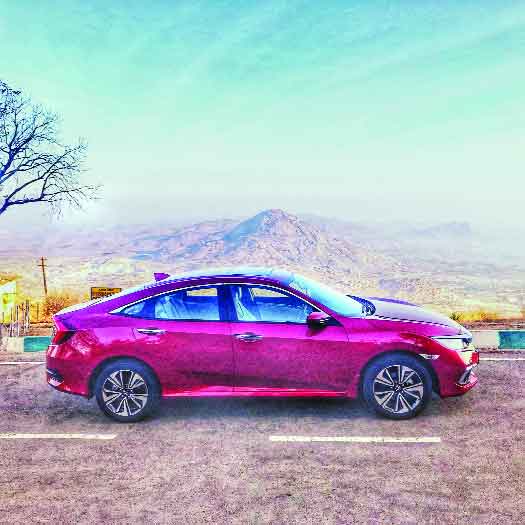
The Honda Civic is Back!
by Kushan Mitra / 22 February 2019The new Honda Civic is definitely gifted with awesome looks, with or without its front-end. But will this tenth-generation set the roads alight in India as the previous Civic did? The launch of the first Civic by Honda Cars India a decade and a half ago heralded a revolution. The car, which was the eighth-generation of the Japanese carmaker’s popular sedan (and hatchback in European countries), was a sales success. But Honda was not able to continue the Civic’s successful run in India for too long for a multitude of reasons. However, one has to admit that a major reason why sales of the Civic tailed off was India’s growing love affair with oil-burners, that is diesel cars. Honda globally did not have a smaller diesel motor that they could bring to India back then and that played a role in the company ceding the segment to its rivals, first the Chevrolet Cruze and then further on the Toyota Corolla Altis and Skoda Octavia.
But now the Honda Civic is back and after skipping one global generation, Honda cars India has brought in the tenth-generation. This time, they have ensured that it has a diesel engine alongside a zippy petrol motor. So let us deal with the headline numbers first. The 1.6-litre turbocharged diesel engine, which shares duty on the other recently introduced Honda, the CR-V, produces a decent 120 horsepower. The company claims that thanks to their “Earth Dreams” technology, the Civic i-DTEC returns an astounding 26 km per litre under Indian test conditions. The Civic also comes with a 1.8 litre i-VTEC petrol that produces a fairly decent 140 horsepower. Disappointingly for Civic fans, Honda has not brought either of the powerful engines that do service on this particular sedan in the United States, which are a 158 horsepower 2.0 i-VTEC and the very impressive 200 horsepower turbocharged 1.5-litre engine. Of course, India is a fuel-economy obsessed market but Honda has bucked the trend in the past with cars like the Honda Accord V6, which all car nuts in India who drove, including me, remember as a rocket, a thirsty rocket, but a rocket nonetheless. Even today, good second-hand examples of this car, like the original Honda City VTEC, which was another amazing car, command top dollar.
But can the new Honda Civic become a future classic like its illustrious predecessors? Well, it does certainly knock the door on the looks front. Yes, the snout of the car is a bit incongruous. In fact, the chrome slab across the front grille, which is apparently a Honda signature, does make the car look quite weird. Because from the side and particularly from the rear, it looks fabulous. In fact, the rear three-quarter look of this vehicle is among the prettiest I have seen on a car in India. This car looks as attractive as a supermodel sashaying down the ramp with some toilet paper stuck to her heel. Still very, very pretty but you know, something is off.
What I did find interesting is that despite the looks, particularly the coupe-shaped sloping roofline which makes you assume that the car would be very tight inside, it really is not. I will not say it is the most spacious car in its segment but it does not feel cramped. After all, the Civic sedan is designed for the American market, where people are not quite small or short. Headroom in the front is not bad at all, and I am 5’11.” In the rear, even with the front seats pushed back, space is more than sufficient for myself and while three adults on the rear bench is a squeeze on any car, it will not feel so bad on the Civic. The only issue is possibly the fact that in order to get the space in the front and rear, the seats ride rather low and although the Indian Civic is 10 mm higher than the outgoing model, ingress and egress is a bit clumsy the first few times until you get the hang of it.
But you never buy a car for its looks alone, you do care about the performance too. So how is the new Civic? Well, first a disclaimer, this is a first drive, not a detailed test drive where I drive and experience a vehicle over a few days during my commute. We drove the car around the highways near Bengaluru airport and up the twisty roads on Nandi Hills. Initially, I had the i-DTEC which comes with a six-speed manual transmission. Now, I have a strong opinion about six-speed manual transmissions in India because I still believe it is one gear too many on any car. That said, on the highway you can easily put the car into sixth and just cruise at 80-100 km per hour, the diesel purring along. What does not purr along are the tyres? Because of the need to derive higher fuel economy, the i-DTEC comes with low rolling resistance tyres and those are noticeably noisy. You can drown that out by pumping the volume on the smart infotainment system, which is similar to those on other new Hondas, and comes with support for Apple CarPlay and Android Auto, standard across variants.
Now, on the twisty sections you really do need to mash the gears to keep the motor in its narrow power band. While the car does take the corners very steadily indeed, you do feel that it could do a bit more. Maybe with grippier tyres it could. Then again, even with enthusiastic driving, the Civic Diesel returned almost 15 km per litre. This is clearly a car designed to be an economical long-distance hauler, but a boy racer.
So on to the iVTEC, first things first, there is no manual version on this Civic. Nope. Nada. Nyet. What you get is Honda’s very nice Continuously Variable Transmission (CVT) with a Torque Converter and seven forward speeds as standard, as well as a paddle-shift system when you want to have fun. Now, Honda’s CVTs are very smooth — I loved the CVT on the diesel Amaze for example — but they are not designed again for very enthusiastic driving. On regular day-to-day driving on the highway and in the city, gear shifts are brilliant and kick-down power when you need to get a move on gets delivered promptly. But you do start to sense some shift-lag when you start using the paddles a lot. Possibly I am saying this because dual-clutch gearboxes and their millisecond shifts have spoiled me. While this CVT is not what I would call lazy, it again feels tuned more to regular urban commuting.
And you know what? Urban commuting is what most buyers of the Civic will do, and once you begin to live with it, you can work your way around the CVT transmission and figure it out. As such both the iDTEC and iVTEC Civics are very well suited for that role and look fantastic as well.
The problem Honda India faces has actually less to do with the Civic and more to do with the segment, because the segment is moribund. India’s love affair with the Sports Utility Vehicle continues, anybody buying a car in the Rs 15-18 lakh range is looking lustfully at the Hyundai Creta. The Civic, which one expects to match the Corolla Altis for price, meaning it would be around the Rs 18-24 lakh segment, will have people look at the Hyundai Tucson, or have people who want space just look at the Toyota Innova. There is no doubt the new Honda Civic is a good car and an excellent looking one at that, but I’m not sure it can make the Indian buyer start looking at sedans again.
Courtesy: The Pioneer
Writer: Kushan Mitra
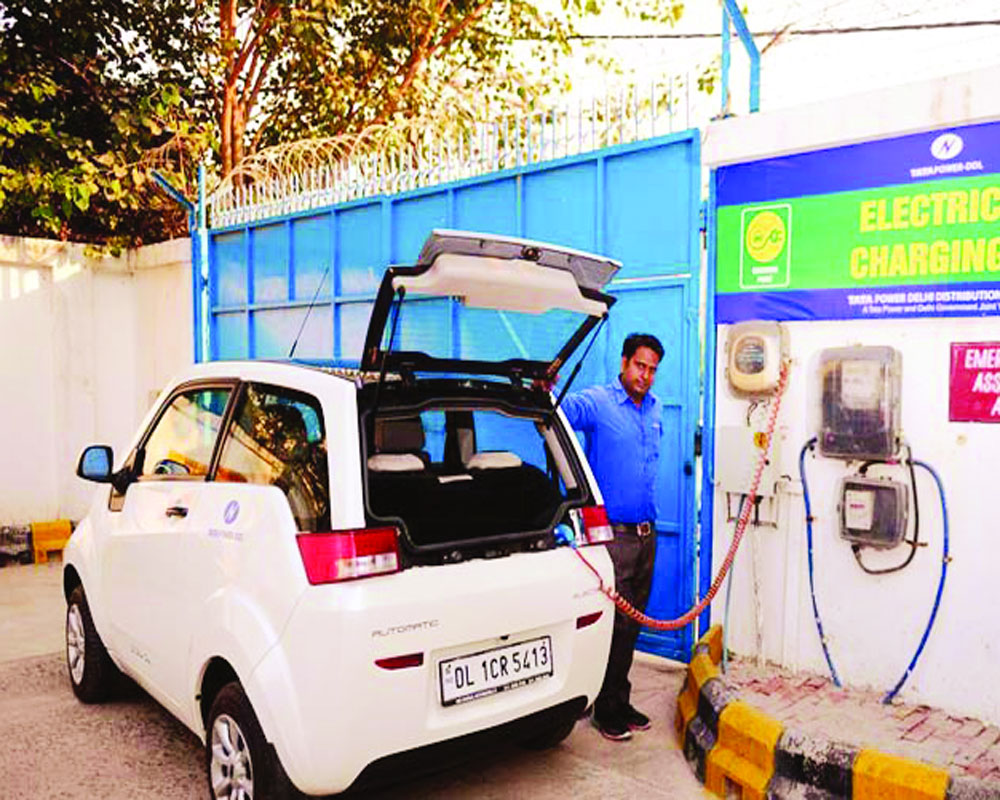
The future of electric mobility in India
by Kushan Mitra / 11 February 2019The Government wants to promote electric mobility from a pollution perspective. That’s good but how does it propose to pay for it?
You will be surprised to hear that India is well on its way to become a surplus producer of electricity. In fact, even as tens of power plants, built during a debt-fuelled rush, are still to hit the grid, India has more than enough total electricity to meet most of its needs. The problem in our country that any expert on energy will tell you is the abysmal state of the finances of distribution companies that are usually owned by State Governments.
Politicians are used to giving doles of free power, which in some cases, benefit them the most as many leaders make it up to the ranks. India’s large and rich farmers have made matters worse. At the same time, some newer power plants produce energy at slightly higher rates and the urge to keep rates low or subsidised means that politicians would rather deal with load-shedding, which is not a function of power production anymore but one of cost.
We make this argument to answer those critics of electric cars, who ask where is the electricity for electric cars and two-wheelers if India is to go down the electric mobility route? The fact is that there is more than enough electricity in our country. If India were to go down an electric path and if one assumed that by 2030, 10 per cent of all new vehicles sold were electric, it would use under 10 per cent of the installed capacity. Of course, there are all sorts of other problems. We need to address them all.
The first, of course, is the fact that Battery Electric Vehicles are not exactly clean. They are, in the words of many, “emissions elsewhere” vehicles. This is particularly true in India where a bulk of power remains driven by coal-powered thermal plants. Thermal plants in our country use coal, which has high ash content. This makes the particulate matter problem even worse.
Of course, those living in Delhi won’t care if pollution moves away to a sparsely populated area, say 500 kilometers away, but until a compensatory scheme is worked out, it is not what you would call it to be ‘fair’. Also, according to some carbon mathematics done by both research institutes and car companies, this would make Battery Electric Vehicles more carbon-inefficient than a Plug-In Hybrid Electric Vehicle (PHEV).
Sure, one could argue that electric cars can be powered by green sources of energy, and that is a noble idea, but if you are charging your electric car at night, solar is not quite an option for obvious reasons. On the other hand, wind power is seasonal and needs vast open areas to build the turbines. In countries like Norway, where electric cars have really caught on, a majority of the power produced comes from hydroelectric plants, ironic for a nation that makes its money from selling oil.
Damming the Himalayas is fraught with seismic risks and large electricity generating dams on the plains like the Sardar Sarovar project have huge issues surrounding land acquisition. This is not to say that storage solutions to store solar energy generated in the day will not be available, some companies like Tesla are developing both home and commercial storage facilities for solar power. This could mean that solar power can charge your car and even meet the ‘peak’ demand for power, which in India is usually a Friday evening at 7 PM.
The problem is actually not so much about electricity generation but primarily one of storage and distribution. In fact, even in localities, where there is no problem of electricity supply, improvements need to be made to transformers and charging infrastructure if widespread electric private mobility takes off. And that will cost a lot.
Then there will also arise the question as to who will pay the electricity bill? This is the big problem in India — the bill. Further, there are unintended consequences as well, both Central and State Governments make huge amounts of money from taxing liquids. The liquids in question being alcohol and petroleum products. Here is the strange situation about subsidising electric cars and electricity for electric cars. More owners of electric cars and two-wheelers, who pay lower taxes and then don’t buy highly taxed petroleum, actually hurt Government revenues.
Of course, if that is the price to pay for lower emissions, some might argue that it is a price worth paying. But the overall benefit from battery-powered vehicles is questionable as we have already discussed, emissions move elsewhere and overall carbon benefits are lower than plug-in hybrids.
In fact, if one looks at battery-powered e-rickshaws, India has already adapted to electric vehicles but unintended consequences here have meant that millions of lead-acid batteries have to be processed and that has to be thought of. Cases of battery theft, too, have shot up in Delhi. This columnist has argued before that hybrid vehicles are the best thing to do in the short-term while charging infrastructure and the solutions for many of these problems are thought.
The Government has to think of ways to replace revenue while spending money on grid improvement. Subsidies for electric vehicles, particularly for cheap power, may be a self-defeating idea for Governments in the short term. Parking solutions have to be found. Where will people charge vehicles if they don’t have parking at their own house? Residential society bylaws have to be changed if people put chargers inside the parking areas and these will have to be thought of by policy-makers at the Centre, state and municipalities.
Writer: Kushan Mitra, Managing Editor, The Pioneer
Courtesy: The Pioneer

New Year 2019: Road Safety Comes First!
by Kushan Mitra / 04 January 2019First, Happy New Year to all of you, but let me temper my good wishes with a sobering thought. In 2019, another 150,000 Indians, possibly more are going to die on the roads of this country. Although, to be honest there are times that one wonders why more people do not die on the roads every year. Indian traffic after all is like classical Brownian motion of particles, moving around in random directions but never seeming to touch each other. Everyday while driving in India, actually no matter where in this country, you notice hundreds of motorcyclists without helmets, others triple-rising with impunity, folks on cars and motorcycles making calls while driving, heavily overloaded public transport and what not.
It is a madhouse out there and I will be honest, in such a madhouse I also fall foul of the rules sometimes. When it comes to using my phone, I do not physically use my handset anymore thanks to technologies like Apple CarPlay and Android Auto which are controlled through voice assistants. That said, there are studies out there that prove that using a phone even through a hands-free technology can distract you. And that is something I understand. Imagine if you have a fight with someone on the phone while driving? How can you possibly be paying full attention to the act of driving? And it is getting worse. A few weeks ago I noticed someone making a video call while driving. It all seems hunky-dory until that split second where something unexpected happens and well, your life, as you know it, is over.
Sure, there will be a lot of interesting new cars coming to India this year which I am looking forward to drive and I’m sure there will be some interesting experiences with cars on foreign shores as well, but this year I genuinely wish for another thing. That we all resolve to drive a bit better, drive gentler, be more considerate to others on the roads and generally be nicer road users. I understand that there are days that are frustrating and that driving in this country can be an extremely irritating experience and we can carry on saying ‘what about them’. But whataboutery will not improve the roads, better behaviour will, because let us be honest, I really doubt that traffic enforcement is going to dramatically improve other than the core areas of some major cities. I really hope it does, but it is contingent on us to be better ourselves.
So if you make just one resolution for 2019 let it this, be a better driver, be the better driver.
Writer: Kushan Mitra
Courtesy: The Pioneer
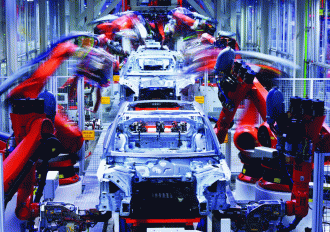
The Success Story of Indian Automotive Industry
by Sugato Sen / 11 July 2018Economic liberalisation and the abolition of license raj scripted the success story of Indian automotive industry.
In recent times, ‘Make in India’ for the automotive sector has caught the imagination of the world. However, a look at the past will enrich all by the captivating journey of the automotive industry that began a long time ago. Before the economic liberalisation, before the licensing raj, even before India attained Independence. It started when M Visvesvaraya, an Indian engineer and renowned statesman, envisioned an indigenous automotive industry in India. His vision was transformed into a detailed proposal for the then Central Government and presented in the 1930s.
The proposal did not find acceptance in the Government; nonetheless Indian industrialists saw merit in it and established Hindustan Motors and Premier Automobiles in 1942 and 1944, respectively. Bajaj Auto came into existence in 1944 initially by selling imported two and three-wheelers in India. The foundation of Bajaj Tempo originated from Bajaj Auto. They started assembling three-wheeled Tempo auto rickshaws and small trucks in 1951, under licence from Germany. In 1958, the companies announced the creation of a joint venture called Bajaj Tempo Motors.
General Motors and Ford were the first companies to start assembling vehicles in pre-independent India. However, in 1953, the Indian Government introduced a policy that allowed only units with a plan for progressive manufacture of components and complete vehicles to operate in the country. This led to the exit of General Motors and Ford from India. Nonetheless, the policy saw many Indian entrepreneurs committing themselves to developing an automotive industry in India.
Ashok Leyland, Standard Motor Products entered in the commercial vehicle space, while Mahindra & Mahindra invested in Utility Vehicle manufacturing in the country. This was followed by Tata Engineering & Locomotive Company (TELCO) in commercial vehicle segment, which increased the strength of indigenous automobile industry in India. In the two-wheeler space, Enfield India entered with a plan to manufacture motorcycles. Bajaj Tempo, established in 1958, started assembling three-wheeled Tempo auto rickshaws and small trucks.
In the 1970s, the Government had a focus on encouraging development of the two-wheeler segment that would have catered to the mobility requirement of the growing middle-class population, which led to the entry of the State-owned Scooters India and Kinetic Engineering in the two-wheeler segment in 1972.
In the 1980s, there was an ease of restrictive rules and licensing controls that governed the industrial sector. Relaxations were made with regard to regulations that existed on capacity licensing and foreign collaborations, imports of capital goods, technology and raw-materials. During this period, several Japanese two-wheeler manufacturers entered India through joint ventures.
Bajaj-Kawasaki, Hero-Honda, TVS-Suzuki and Escorts-Yamaha started production of motorcycles with 100 cc engine capacity models. In light commercial vehicles, the entry of Eicher Mitsubishi, Allwyn Nissan, Swaraj Mazda, DCM Toyota also made a significant contribution to the development of the industry. Maruti Udyog Ltd entered into collaboration with Suzuki in 1982 and established a manufacturing unit for passenger vehicles.
Easing of restrictive rules also led to considerable growth in the auto components segment. The entry of foreign manufacturers in the automobile segment led to the emergence of diverse product designs which required auto component manufacturers to invest in technological upgrades to cater to the changing demands. Consequently, many domestic manufacturers collaborated with foreign players in the auto component space.
Moreover, the entry of foreign manufacturers in vehicles manufacturing was followed by entry of their vendors into the Indian market through collaborations with domestic players. The entry of the foreign players not only brought technology but also the best practices of automotive manufacturing. These steps were a precursor to the economic liberalisation of 1991.
The end of the licence raj and economic liberalisation were milestones towards easing up policies for the growth of the automotive industry in the country. The focus of the new industrial policy was to create a competitive environment in the automobile sector and remove the barriers to entry and growth of industry.
As automotive components and complete knock downs (CKD) were under quantitative restrictions, the Government allowed import of such items against a Memorandum of Understanding (MoU) to fulfill certain conditions including localisation and foreign exchange neutralisation. The liberalisation led to the entry of foreign players into the Indian market — some through partnerships, some directly. The likes of General Motors, Ford, Daewoo, Hyundai, Honda Motors, Toyota, FIAT, Mercedes Benz, Tatra and Volvo entered the market.
The next milestone for the industry was the introduction of the auto policy by the Ministry of Heavy Industry in 2002. The vision of the auto policy was to establish a globally competitive automotive industry in India and double its contribution to the economy by 2010. Its focus was to promote modernisation and enhance design and development of vehicles within the country as well as establish domestic safety and environmental standards at par with the international ones. It defined a target of making India a manufacturing hub for small cars, two-wheelers and tractors. Auto Policy 2002 allowed automatic approval of foreign equity investment upto 100 per cent for the manufacture of automobiles and auto-components. At the same time, taxes on vehicles across segment were brought down allowing prices for vehicles to reduce.
Another development that gave right policy direction to the automotive industry was the introduction of the supportive trade policy environment by the Government, which aimed to make India a vehicle and component manufacturing hub by encouraging investments in the sector through an open Foreign Direct Investment (FDI) policy, tiered import duty structure, with low duty for components/parts, higher for CKD and semi knocked down (SKD), and very high for completely built vehicle (CBU) imports and highest for used vehicles.
The very high tariff policy makes import of vehicles difficult and uncompetitive in the Indian market, especially commuter vehicles, which prompted global vehicle makers setting manufacturing plants in India to access the huge and growing automobile market in India. This policy has played and is still playing a stellar role in India’s “Make in India” ambition.
The Automotive Mission Plan 2006-2016 (AMP 2006-16) was a step to implement the recommendations of the Auto Policy, 2002. It had set growth targets for the automotive industry and recommended interventions to make India a global automotive hub. The AMP 2006-16 was successfully concluded. The success of AMP 2006-16 led the industry and the Government to jointly work on the next collective vision for the Indian automotive industry — AMP 2016-26. Automotive industry has come a long way. From producing mere 4,000 units of vehicles in 1950 to producing 29 million vehicles in 2017-18, more than four million passenger cars and 23 million two-wheelers were produced last year. More than 8,50,000 commercial vehicles and one million three-wheelers were made.
The industry today contributes to more than seven per cent of the country’s GDP. It is half of the manufacturing sector and supports jobs for 32 million people. Vehicles produced in India are not just catering to the domestic demand, a large share of those produced here are exported to over 150 countries across the globe. ‘Make in India’ for the automotive industry has been possible due to Indian entrepreneurs, who took the dive and the technology infusion from foreign companies, and successfully made India a manufacturing hub. The focus of the Government on local value addition and employment through judicious trade and investment policy has steered indigenisation of the auto industry with both Indian and foreign companies contributing to the development.
The phased manner in which the licence raj was abolished, restrictive rules were curtailed and the economy was liberalised, has played a distinct role in the emergence of the Indian automotive industry as one of the most successful stories of industrial development in India.
Writer: Sugato Sen
Courtesy: The Pioneer
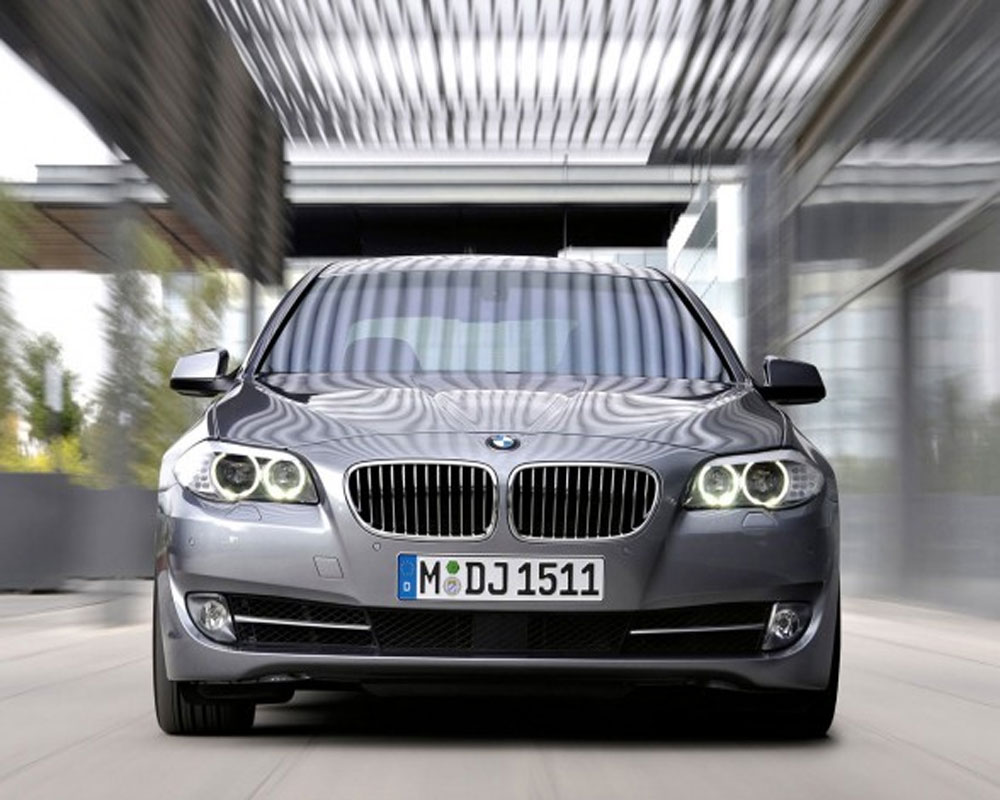
First Drive
by Opinion Express / Gopal Chopra / 01 November 20122011 BMW 5 SERIES IS A SMOOTH OPERATOR
The outgoing BMW 5 Series may have ushered in a dramatic leap forward in terms of dynamics, technology, safety and creature comforts, but it's the previous generation – the E39 – that Bimmerphiles still speak of in hushed tones. The departing E60 may have been a more capable package, but it was also the source of much controversy and hand wringing. Blame Chris Bangle. Blame byzantine iDrive menu structures. Blame spirit-muffling layers of electronics. Hell, blame improved competition or hidebound brand loyalists who refuse to accept the new. No matter whose camp you point the finger at, the 2004-2010 5 Series was a polarizing creature, both aesthetically and from behind the wheel. Despite (or perhaps because of) all this, BMW enjoyed record-setting global sales of the Fiver, suggesting that that the traditionalists had it all wrong.
Still, one look at the new-for-2011 F10 model might reasonably lead you to believe that a bit of mulligan has occurred at the hand of Adrian van Hooydonk and his design team – a toning down of the E60's most divisive elements. To be sure, the E60's Dame Edna spectacles have been consigned to a dusty drawer and the raised "Bangle Butt" has kept its date with Celebrity Fit Club. In the not-so-dearly departed's place is a handsome new sedan that appears simultaneously more in line with the 5 Series' lineage yet firmly set on the future. But to label the sixth-generation Fiver as an aesthetic or strategic regression would be incorrect, van Hooydonk tells us. As he points out, BMW design has a tendency to periodically muscle in with big, bold, design statements – to knock down walls – and in the follow-up model, its stylists can move about a bit more in the clean air made possible by its predecessor. Fair enough – we prepared to check our Weltschmerz at the door and give this new Fiver a shot. Has it all been worked out for the better? BMW invited us to hop a couple of planes to Portugal in order to find out.
In-person, a lower roofline and a stretched wheelbase (at 116.9-inches, it's 3.2 inches longer than the E60, making it the broadest in the segment) have combined to give the 2011 5 Series a markedly sleeker appearance. The swage line that originates from just behind the front fenders and gets progressively more defined as it moves rearward lends directional thrust, as does its more aggressively shaped greenhouse. Wide, nearly vertical kidney grilles are attached to a snub nose, and even if the headlamps are now more conservative, the more upright grilles suggest that BMW is pondering a return to the forward-leaning, shark-like front end that defined its history. Indeed, AVH tells us that the sportier the model, the more pronounced we can expect this design hallmark to be (see the E89 Z4 for guidance). Overall, this is a confident, well-balanced shape, a clear design unencumbered by the shouty details of its antecedent. All-in, BMW says that the automatic-equipped 535i weighs in at 4,090 pounds, about 100 pounds portlier than a comparably equipped outgoing model – remarkably little in view of its added size, rigidity (+55 percent over the E60) and technology.
Underneath its controversial skin, the outgoing E60 ushered in a new era of high-tech solutions for the 5 Series in virtually every arena, from driving dynamics to creature comforts to safety and overall efficiency. In this regard, with the F10, BMW has buried the throttle more firmly into the carpet than ever before. New engines, gearboxes, suspension architecture, rear-wheel steering, user-selectable adaptive drive settings, brake energy regeneration, and yes, another generation of IDrive have been whipped up in a bid to keep the 5 out in front of the new Mercedes- Benz E-Class, Audi A6 and Jaguar XF.
The new single-turbo N55 engine just plain works, with eager revs and a wonderfully flat power curve. Interestingly, it wasn't more than a few months ago that we found ourselves on many of these very same Portuguese roads behind the wheel of another new 5 Series – the 2010 Gran Turismo. Visually, the 5GT may be something of an automotive platypus, but dynamically it proved beyond reproach, setting lofty expectations for this new sedan in the process. Appropriately, a quick ride from the airport in the back of the 5GT before we tucked into the 535i sedan reminded us why the bifold hatchback model exists – space. The longer wheelbase of the 5GT creates epic, limo-like accommodations for rear-seat passengers, with palatial legroom and commanding visibility. Its straight-laced new brother?
Comparatively tight back there (albeit class-competitive), a situation that figures to be the same with the Touring – a model we're no longer likely to get with this new generation. Of course, a sport sedan like the 5 Series isn't purchased for the measure of its back seat, so with the keys (okay, fob) to the new 535i firmly in hand, we headed out onto the lilting coastal roads and motorways northwest of Lisbon to see if we could rekindle a lost Love Connection. As we slipped aboard for the first time, all was at once familiar yet utterly new. From its three-spoke steering wheel to its Brobdingnagian 10.2-inch navigation screen, sturdy switchgear, iDrive porkpie, finicky drive selector and general shapes and materials, the 535i reminds of the 5GT and the new 7 Series, yet it carries its own dashboard design. While evolutionary, it's a beautifully executed space, with long, clean lines and ergonomically sound primary and secondary controls. As with its newer stablemates, the 5 Series receives a much more intuitive fourth-generation iDrive all-in-one controller, and with its rationalized menu structures and direct-function buttons surrounding the central controller knob, it's a system that's finally beginning to make some sense.
While we liked (okay, adored) the out-going 5 Series' N54 3.0-liter twin-turbo inline-six, the 535i receives a new single turbo engine dubbed N55, and it offers exactly the same 300 horsepower and 300 pound-feet of torque. So why bother? Because BMW's smarty-pants engineers have imbued the new motor with superior packaging, cleaner emissions and better throttle response. About that last bit – if you're wondering how a single, larger turbo can be quicker to respond than a pair of smaller units, BMW has cracked the code with the combination of a dual-scroll element and the company's Valvetronic throttle-less intake technology. Suffice it to say that the N55 just plain works, with eager revs and a wonderfully flat power curve (the engine's torque cup runneth over from just 1,200 on through 5,000 rpm). BMW says 60 miles-per-hour can be cracked in 5.7 seconds and top speed is limited to 130 mph – 150 mph if you spring for the Sport Package.
On the track in Sport + mode, the big Fiver's mid-corner stance is flatter than your first girlfriend. For the gluttonous, a turbocharged 4.4- liter V8-powered 550i with 400 hp and 450 lb-ft. will be offered, along with a late- availability 528i with 240 horses. While we're sure that the 550i's extra power is nice, the lighter weight, viceless performance and presumably superior fuel economy of the N55 (no EPA numbers are available yet) has us convinced that it's once again good to be the middle child. As ever, European customers will get a range of diesel offerings, but there are no plans to offer any such models in North America. All-wheel-drive variants, however, are in the pipeline for later this year.
A six-speed manual will be available in the 535i and 550i, but at the launch event, we were limited to torque converter- equipped 535i models. For 2011, there's a new ZF automatic with five clutches(!) and eight forward gears(!!) that offers a wider ratio spread. In the past, we've found that transmissions with this many speeds are prone to hunting, as if their software logic is somehow trying to justify the inclusion of so many cogs. The 5 Series largely avoids this trap, although we did notice a tendency to cycle annoyingly between gears at very low speeds under shallow throttle openings (think: nudging forward in bumper-to-bumper traffic). Notably, BMW is ditching the chrome push-pull paddle-shifters used on other models in favor of traditional pull tabs (right to upshift, left to downshift) – apparently some people found the old Anish Kapoor chrome thumb sculptures hard to use. The new ones work just fine, but we miss the older version's dual +/- action and subtle artistic quality.
For 2011, the 5 Series has discarded its long-serving Macpherson strut front suspension in favor of a new multilink arrangement. The rear end is now also under the sway of a new five-link system, and coupled with BMW's Dynamic Damping Control (read: adaptive suspension) and Active Roll Stabilization (dynamic anti-roll bars), the whole works is at once at ease and eager to please. By that we mean that the ride quality is free from harshness without being floaty, yet it's ready to boogie at a moment's notice.
Word that the F10 would be the first 5 with electric power steering didn't exactly warm our enthusiast cockles, nor did news that all 535i evaluators at the launch would be equipped with optional Integral Active Steering, a variable-ratio system that first made its appearance on the outgoing model. Thankfully, this is a new IAS system, as the first-generation setup never won any prizes for its communicability. Still, we were concerned that EPS and IAS' new active rear steering feature might contribute to feel-free handling, or worse, spooky dynamics. Nope. The Bavarian boys and gals have worked diligently to assuage all fears, and whether we were zipping along the littoral mountain roads, drumming along the motorway, or hammering around all 13 turns of Portugal's 2.6-mile Autódromo do Estoril, the 535i was rock solid, predictable and forgiving. Unlike many other EPS systems we've used, this one doesn't feel like there's an Internet's worth of siliconry busily rearranging ones and zeros to turn the driver's inputs into action. The variable-ratio shouldn't be off-putting during daily commuting, and on serpentine roads, it's a genuine ally – there's actual linearity, weighting and more than a modicum of feedback for one's fingertips to process as you spin the wheel just 2.1 turns from lock-to-lock.
Hallelujah Out on the track, with the optional Driving Dynamics Control rocker switch toggled to its raciest Sport + mode (the other three settings: Comfort, Normal and Sport), this big Fiver's mid-corner stance is flatter than your first girlfriend. The steering gains weight and speed without feeling artificial, the gearbox's marching orders are rejiggered to keep engine revs up and reduce shift times, and the electronic limited-slip tech and relaxed traction and stability control algorithms yield a surprisingly frisky big sedan. While you're never going to convince yourself you're dive-bombing in a Z4, this is a car that shrinks handily at speed, in part because the brakes are pleasingly firm and 18-inch Dunlop Sport Maxx GT run-flats offer credible grip with surprising compliance.
One fly in the enthusiast's ointment: To borrow from an old Western, the 535i is quiet... too quiet. Unless you really stomp on the gas and/or cascade down a handful of gears to get the engine on boil, you're not likely to hear much. That paucity of drivetrain noise is great for when you're cuing up Wagner on the surround sound audio, not so great when you're trying to set your enthusiast driving neurons alight. That said, we're happy to report that wind and tire-noise are similarly muted. Safety-minded options include a brace of cameras to provide a bird's eye parking view (think: Infiniti's brilliantAroundView Monitor), night vision with pedestrian detection, active cruise control and a nifty heads-up display. There's even a self- parking option, a feature that one German BMW official assured us will be sure to please your wife. Oh, yes he did.
The new 5 Series is better looking, more luxurious and more capable yet it is also safer and cleaner. So is it ready to pick up the E39's torch anew? Well, not really. Without going so far as to suggest that that car was a primitive instrument of joy, BMW has moved too far down the field technologically to simply allow its engineers to pour old wine into new wineskins and call it a day. Besides, BMW's customers, competitors and various world governments have all gone and moved the segment's goalposts in the meantime. Having said all that, 2011 5 Series is easier to use, easier on the eyes and far easier to find the magic in than its immediate predecessor. That might not be sufficient to proclaim it a neo-E39, but it might just be enough to move the Roundel to the head of the pack all over again.
Inputs from Gopal Chopra, Delhi Bureau
FREE Download
OPINION EXPRESS MAGAZINE
Offer of the Month





